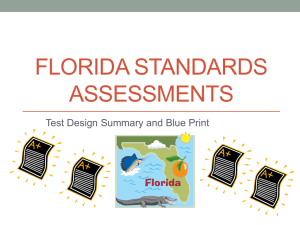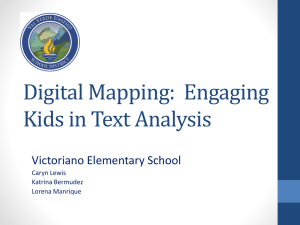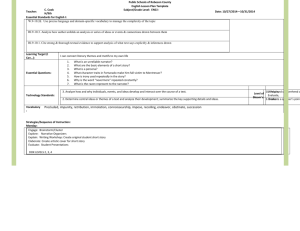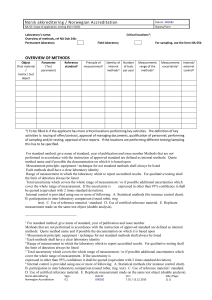Seventh Grade Science Standards
advertisement
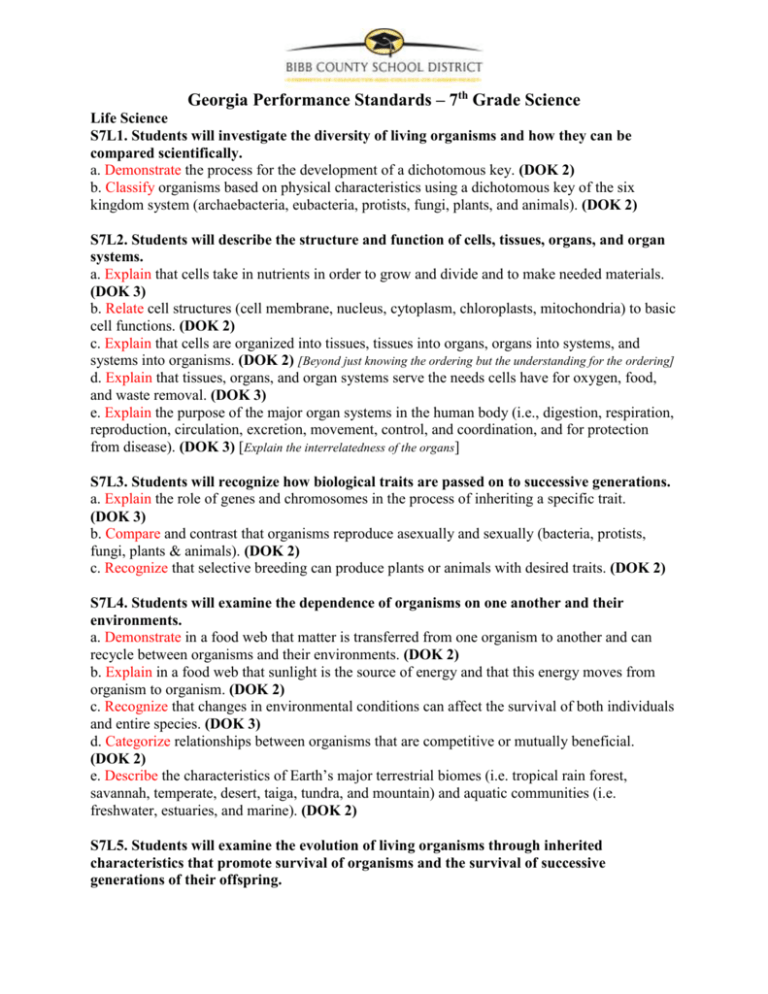
Georgia Performance Standards – 7th Grade Science Life Science S7L1. Students will investigate the diversity of living organisms and how they can be compared scientifically. a. Demonstrate the process for the development of a dichotomous key. (DOK 2) b. Classify organisms based on physical characteristics using a dichotomous key of the six kingdom system (archaebacteria, eubacteria, protists, fungi, plants, and animals). (DOK 2) S7L2. Students will describe the structure and function of cells, tissues, organs, and organ systems. a. Explain that cells take in nutrients in order to grow and divide and to make needed materials. (DOK 3) b. Relate cell structures (cell membrane, nucleus, cytoplasm, chloroplasts, mitochondria) to basic cell functions. (DOK 2) c. Explain that cells are organized into tissues, tissues into organs, organs into systems, and systems into organisms. (DOK 2) [Beyond just knowing the ordering but the understanding for the ordering] d. Explain that tissues, organs, and organ systems serve the needs cells have for oxygen, food, and waste removal. (DOK 3) e. Explain the purpose of the major organ systems in the human body (i.e., digestion, respiration, reproduction, circulation, excretion, movement, control, and coordination, and for protection from disease). (DOK 3) [Explain the interrelatedness of the organs] S7L3. Students will recognize how biological traits are passed on to successive generations. a. Explain the role of genes and chromosomes in the process of inheriting a specific trait. (DOK 3) b. Compare and contrast that organisms reproduce asexually and sexually (bacteria, protists, fungi, plants & animals). (DOK 2) c. Recognize that selective breeding can produce plants or animals with desired traits. (DOK 2) S7L4. Students will examine the dependence of organisms on one another and their environments. a. Demonstrate in a food web that matter is transferred from one organism to another and can recycle between organisms and their environments. (DOK 2) b. Explain in a food web that sunlight is the source of energy and that this energy moves from organism to organism. (DOK 2) c. Recognize that changes in environmental conditions can affect the survival of both individuals and entire species. (DOK 3) d. Categorize relationships between organisms that are competitive or mutually beneficial. (DOK 2) e. Describe the characteristics of Earth’s major terrestrial biomes (i.e. tropical rain forest, savannah, temperate, desert, taiga, tundra, and mountain) and aquatic communities (i.e. freshwater, estuaries, and marine). (DOK 2) S7L5. Students will examine the evolution of living organisms through inherited characteristics that promote survival of organisms and the survival of successive generations of their offspring. Georgia Performance Standards – 7th Grade Science a. Explain that physical characteristics of organisms have changed over successive generations (e.g. Darwin’s finches and peppered moths of Manchester). (DOK 2) b. Describe ways in which species on earth have evolved due to natural selection. (DOK 2) [providing examples] c. Trace evidence that the fossil record found in sedimentary rock provides evidence for the long history of changing life forms. (DOK 2)




